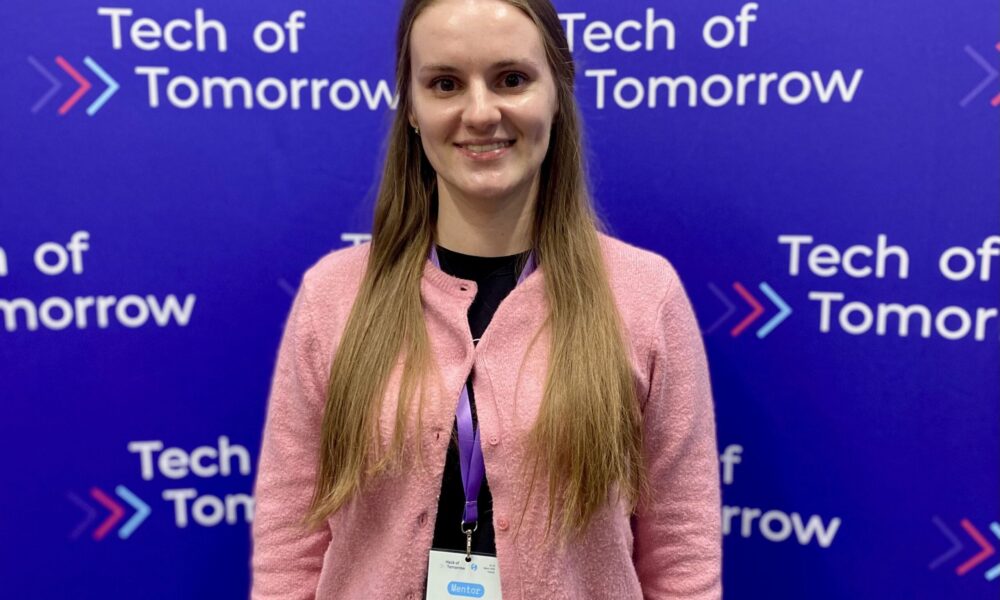24-hour innovation: How hackathons are shaping the future of IT — insights from mentor and judge Nastassia Shahun

Senior Business Analyst Nastassia Shahun shares her insights as a judge and mentor at international hackathons — and why these fast-paced events matter not only for participants but also for industry experts.
The term “hackathon” is still relatively new — the first event of this kind took place in 1999. The idea? Form a team, create a working solution that could attract investors, and do it all under extreme time pressure. Today, hackathons are a global movement, with millions of participants each year. Nastassia Shahun, a seasoned Business Analyst with years of experience in FinTech, EdTech, and eCommerce, shares how hackathons spark innovation, help IT talents grow, and provide valuable lessons for participants, mentors and judges.
Specific problems – specific solutions
Nastassia, what is the fundamental difference between hackathons and other competitive formats?
I would say a hackathon is, above all, a platform for rapid innovation. Participants are given a real-world challenge and must create a functional prototype within just 24 to 48 hours. It’s not about abstract ideas — it’s about building something practical, usable, and potentially scalable in a very short time. This pressure fosters creativity, teamwork, and fast decision-making. What makes hackathons especially valuable is the involvement of industry experts. Often, representatives from major companies attend not just to judge, but to discover new talent and fresh ideas. Even if a team doesn’t win, their solution might still spark interest, leading to future collaboration or even investment. Sometimes, companies propose their own challenges and end up partnering with the teams that solve them best.
Can you give examples of successful cases and projects born at hackathons that have potential or can become widespread in the next 3-5 years?
Yes, absolutely — I’ve seen many projects at hackathons that show real promise. At the recent HackYeah, where I acted as both a mentor and a judge in the FinTech track, one team developed a prototype of a tax optimization platform. It could automatically classify tax-related transactions, apply relevant legislation, and generate reports for individuals and small businesses. The project won — and what’s more, it caught the attention of public financial institutions in Poland, not just private investors. As far as I know, the team is now working with them in a pilot phase, and there’s real potential for this to evolve into a broader collaboration.
Another memorable case was at Hack of Tomorrow, where I judged entries in the Blockchain category. One team built a system to verify data used in AI training — the goal was to prevent AI from learning from false or misleading information, like the infamous “flat Earth” examples. This topic is especially timely, with the EU’s Artificial Intelligence Act set to take effect in 2026, introducing strict requirements for transparency and oversight in high-risk AI applications. And these are just a couple of examples — I could go on.
Do not give ready-made answers
You often participate in hackathons as a mentor. What kind of specialist is a mentor, and what kind of support do they provide to participants?
The main role of a mentor, as I see it, is not to hand out ready-made solutions. It’s about guiding the team — asking the right questions, offering perspectives, and helping them reach creative, sometimes non-obvious conclusions on their own. Often, the right question turns out to be far more valuable than a direct answer.
A mentor also brings in their domain expertise. In my case, that includes business analysis, system analysis, development strategy, and product design. I can help teams shape a solid business model, evaluate whether their solution is scalable, and assess its market fit and technical feasibility. Sometimes I know of companies that have already tackled similar problems, and I share that insight to help them refine their approach.
Another key area is team dynamics. Most teams form on the spot — a developer, a data engineer, a designer — and they need to quickly align, define roles, and distribute responsibilities. If everyone tries to lead or no one takes initiative, progress stalls. I support them in structuring their collaboration and planning their time, so they stay focused on the core idea. Towards the end, I often help polish the pitch — shaping their story, refining the presentation, and making sure the core message comes through clearly.
Finally, motivation is critical. When participants are energized by their idea — eyes bright, eager to build — it’s essential to support that spark. A mentor’s encouragement can keep the momentum going, build confidence, and remind them that they’re capable of achieving something great, even in a short amount of time.
What are the benefits of participating in hackathons for mentors?
First of all, participation in hackathons as a mentor forces you to immerse yourself in studying new topics, to learn about trending technologies. Constantly refresh and update your knowledge to stay on trend. For this purpose, for example, mini-conferences are often held at the events themselves, where mentors and invited experts speak, share their experience, talk about innovations in their fields. In addition, for me personally, this is a unique opportunity to meet new talented people and get a boost of energy and inspiration. To reboot creatively. After hackathons, I always have a bunch of ideas in my head that I can then use both at work and in my personal projects. Well, I would also probably highlight the opportunity to keep myself in good shape. A hackathon is always a soft skills training: you need to build interactions with strangers, help them cooperate, solve some urgent tasks, and all this very quickly, efficiently, in the shortest possible time.
You also serve as a judge at hackathons. Can you share a behind-the-scenes insight — what do judges usually look for when evaluating projects? And do you have any unique approaches to how you assess them?
To begin with, judges follow evaluation guidelines — either from the organizers or from the company that proposed the challenge. These guidelines may vary, but they usually focus on five key criteria. One is realism: how technically feasible the proposed solution is. Another is novelty — how original the idea is and how it improves upon or differs from existing solutions. Then there’s user-friendliness, which includes the clarity of the concept, ease of use, and quality of design. Quality of execution is also important: how complete the project is and what technologies were used. And finally, presentation plays a big role — how well the team communicates their idea.
From my perspective, I also pay close attention to the user and business focus of the solution. Sometimes, teams get so excited about the tech that they lose sight of who they’re building for and why. I really value it when a team identifies a real problem, offers a clear and practical solution, and explains the value it brings in a business context. It’s also insightful to observe how the team functions: how they distribute responsibilities, how they communicate, and whether their collaboration is structured and effective.
In your opinion, how will the hackathon format evolve in the coming years? What emerging technologies might shape the challenges of the future?
I believe hackathons can become a mechanism for rapid validation of ideas and a catalyst for real change. In the coming years, I expect them to play a bigger role in shaping industry standards — especially in areas like artificial intelligence, where transparency and safety are becoming critical. These events can offer a fast and collaborative environment to test ethical frameworks and technical solutions under real-world conditions.
At the same time, I think hackathons will become more specialized, focusing on domains such as finance, space, or healthcare. This shift will draw in highly skilled professionals and people deeply interested in advancing innovation in these specific, high-impact sectors.




